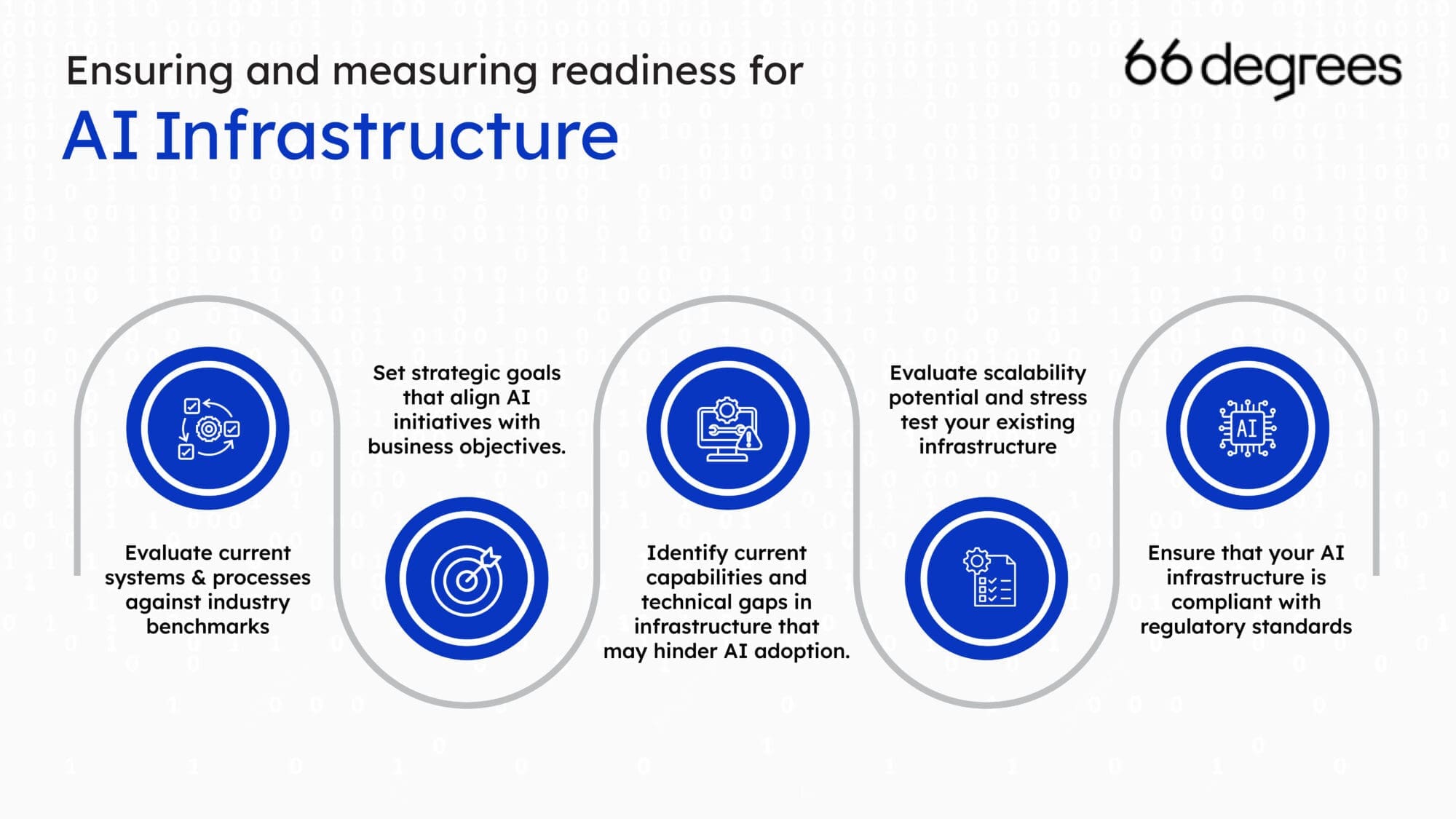
Building a Future-Proof AI Infrastructure with Google Cloud: A Comprehensive Guide

Building a Future-Proof AI Infrastructure with Google Cloud: A Comprehensive Guide
As Gen AI projects move from proof of concept (PoC) to production, and with a growing push to integrate Agentic AI into business and customer experience automation workflows, it’s clear that building a durable AI infrastructure is essential for long-term success.
According to research of 1100 enterprise executives, 10% of organizations already use AI agents, more than half plan to use them in the next year, and 82% plan to integrate them within the next three years. But how does one ensure their AI infrastructure is equipped to support their innovation initiatives for years to come?
The first step is by recognising that future-proofing AI infrastructure isn’t just about staying afloat, it’s about staying ahead of your AI needs with flexible, scalable systems that can adapt to emerging AI models and changing business needs. It also involves creating modular architectures that can easily integrate new AI capabilities, setting the groundwork for agentic AI, and making sure infrastructure can cope with increased use of AI agents across key areas of business.
Implementing a robust AI-powered data supply chain and DataOps that can scale with increasing data volumes, and ensuring compute resources can handle more demanding AI models is also a key part of creating a future-proof infrastructure.
This blog explores the essential components of AI infrastructure, evaluating your readiness for an AI infrastructure, actionable insights on how to build a robust AI foundation with Google Cloud, and steps to ensure future readiness. Let’s dive in.
Understanding the Essentials of AI Infrastructure
AI infrastructure forms the backbone of any artificial intelligence application. It encompasses the hardware, software, and resources necessary for AI development, deployment, and scaling. According to a study by McKinsey, AI could increase corporate profits by $4.4 trillion a year, highlighting the importance of enterprises to accelerate their AI adoption.
Essentially, a robust AI foundation includes computational power, data storage and management capabilities, seamless integration with existing IT systems, and scalability to accommodate future needs.
For that, the key components include:
- Decentralized Data Mesh
- AI-Powered Data Supply Chains
- AI/ML and LLMOps Foundations
- Agentic AI Enabled SDLC
- AI-Powered Decision Intelligence
These elements work in tandem to ensure efficient data handling, model training, and deployment of AI solutions.
Additionally, the current market trends highlight the rapid evolution of AI technologies, such as, fine-tuned LLMS, Conversational AI, Generative AI. Consequently, businesses are facing emerging needs for flexible and adaptable enterprise AI infrastructures capable of integrating cutting-edge advancements.
Key Components of A Future-Proof AI Foundation
1. Purpose-Built Infrastructure
When it comes to effective AI implementation, the main component is a purpose-built infrastructure. Google Cloud’s systems are engineered for exceptional performance, making use of GPUs and TPUs to deliver the parallel processing capabilities crucial for AI workloads. This dedicated infrastructure enables parallel processing, significantly improving efficiency and speed, allowing organizations to tackle complex AI tasks with ease and achieve faster time-to-market for their AI initiatives.
2. Integrated Systems
For achieving AI success, the synergy between hardware and software is a vital aspect. Google Cloud offers integrated systems that reduce development bottlenecks and enhance productivity. Managing compute resources and providing flexibility, these integrated solutions allow teams to focus on innovation rather than infrastructure management.
3. Scalability and Flexibility
AI workloads often require varying amounts of computational power. Google Cloud’s infrastructure is designed to scale seamlessly, allowing you to adjust resources based on your current needs. This elasticity is particularly evident in platforms like Google Kubernetes Engine, which facilitates experimentation and cost optimization through efficient resource allocation.
4. Advanced Analytics and Machine Learning Tools
Google Cloud provides a suite of advanced analytics and machine learning tools that enable organizations to derive meaningful insights from their data. These tools are designed to be user-friendly, allowing data scientists and analysts to focus on solving complex problems rather than getting weighed down by infrastructure concerns.
5. Security and Compliance
As AI systems often deal with sensitive data, security is crucial. Google Cloud’s infrastructure is built with robust security measures, ensuring that your AI workloads and associated data are protected against threats. Additionally, the platform is designed to help organizations meet various compliance requirements, crucial for industries dealing with regulated data.
Ensuring and Measuring Readiness for AI Infrastructure
According to a study by Cisco, 98% of companies report increased urgency to deliver on AI, but only 21% have the necessary infrastructure to meet current and future AI demands. This underscores how essential it is to assess your organization’s readiness and establish metrics for success. Here’s how you can ensure and measure your readiness:

- Step 1: Evaluation: Take a look at your current systems and processes against industry benchmarks to determine how well they align with AI infrastructure requirements. Google Cloud’s AI Adoption Framework can serve as a valuable guide in this assessment, helping you identify areas of strength and opportunities for improvement.
- Step 2: Goal-Setting: Set strategic goals that align AI initiatives with business objectives. This ensures investments yield high returns and are in line with your overall vision.
- Step 3: Assessment: Identify current capabilities and technical gaps in your infrastructure that may hinder AI adoption. Use frameworks like Gartner’s AI maturity model as a guide and leverage the expertise of partners who can assist in mapping your current state to desired capabilities, helping prioritize areas for improvement.
- Step 4: Evaluation: Regularly evaluate scalability potential and stress test your existing infrastructure to ensure it can handle increased AI workloads. Make use of load testing tools, such as Kubernetes Engine and Cloud Load Balancing, to simulate various scenarios and identify potential bottlenecks.
- Step 5: Compliance: Ensure that your AI infrastructure is compliant with regulatory standards and includes robust security protocols to protect data integrity. Google Cloud’s security and compliance offerings, including Cloud Identity and Access Management (IAM) and Cloud Data Loss Prevention (DLP), provide comprehensive tools to safeguard your AI systems and data.
How Google Cloud Can Help Build a Robust AI Foundation
The immense amount of data and processing demands of large-scale generative AI models are beyond the capabilities of today’s infrastructure. This is where Google Cloud comes into the picture. It offers a comprehensive suite of AI solutions designed to build and enhance robust AI infrastructures.
At its core, Google Cloud provides seamless integration capabilities, enabling businesses to incorporate AI into their existing systems efficiently. With a focus on flexibility and scalability, Google Cloud empowers organizations to customize their AI solutions according to specific business needs.
Their key features include:
1. Machine Learning platforms:
– TensorFlow Enterprise: Optimized version of TensorFlow with enterprise-grade support
– AI Platform Notebooks: Managed JupyterLab environment for data scientists
– Kubeflow: Open-source machine learning toolkit for Kubernetes
2. Data analytics and processing tools:
– BigQuery: Serverless, highly scalable data warehouse
– Dataflow: Unified stream and batch data processing
– Dataprep: Intelligent data service for exploring, cleaning, and preparing data for analysis
3. AI-optimized hardware options:
– Cloud TPUs (Tensor Processing Units): Custom-designed chips for machine learning workloads
– GPU options: Various NVIDIA GPU configurations for accelerated computing
– Custom machine types: Tailored VM configurations for specific AI workloads
As Google Cloud stands out with its data analytics and processing tools, which ensure efficient data management and insight extraction, its optimized hardware options, such as Tensor Processing Units (TPUs) are beneficial as well. It offers the computational prowess necessary for advanced AI applications, thereby enhancing the overall performance and efficiency of a robust AI foundation.
Actionable Tips on Making Your System Future-Proof
It’s not enough to build an AI infrastructure. Ensuring your infrastructure remains adaptable and scalable is equally crucial. Here are some actionable steps to future-proof your AI systems:
1. Adopt a Flexible Architecture
Implementing scalable solutions, such as those offered by Google Cloud, that support both current and future AI needs can be beneficial. This approach ensures your infrastructure can evolve alongside technological advancements. For instance, utilizing Google Kubernetes Engine (GKE) allows for easy scaling and management of containerized applications, providing the flexibility to adapt to changing workloads.
2. Continuous Integration and Testing
Using robust CI/CD pipelines to automate testing processes and ensure rapid, reliable delivery of updates. Tools like Google Cloud Build can seamlessly integrate with your existing development workflow, enabling continuous integration and deployment of AI models and applications.
3. Make Use of Cloud Resources
Harness the power of cloud services to benefit from global IT infrastructure. Google Cloud’s network of data centers offers high availability, disaster recovery, and distributed computing capabilities. This global presence allows businesses to deploy AI solutions closer to their users, reducing latency and improving performance.
4. Invest in Staff Training
Regularly update the skills of your IT and development teams to keep pace with emerging technologies and best practices. Google Cloud offers various training and certification programs that can empower your workforce to effectively manage and optimize modern AI infrastructure.
5. Data-Centric Approach
Establish a robust data management strategy focusing on data governance, privacy, and security. Utilize Google Cloud’s data analytics and machine learning tools, such as BigQuery and Vertex AI, to create a scalable and secure foundation for your AI initiatives.
Start Future-Proofing your AI Foundation using Google Cloud
At 66degrees, we empower organizations to make the right choices when it comes to cloud modernization and setting the stage for AI integration. Our strategic Google Cloud consulting services help align your technology needs with your business objectives, ensuring a robust, future-proof AI infrastructure. By making use of our deep expertise in cloud, data and AI engineering, we guide you through every step of your transformation journey. Connect with us to learn how we can help.
Frequently Asked Questions
1. Why is infrastructure architected for AI important?
AI infrastructure refers to the combination of hardware, software, and processes required to develop and deploy AI applications effectively. It is crucial as it ensures the seamless integration, scalability, and efficiency of AI solutions within an organization.
2. How does Google Cloud support AI development?
Google Cloud supports AI infrastructure development by providing comprehensive AI solutions, including machine learning platforms, data analytics tools, and AI-optimized hardware. These offerings enable businesses to build and scale robust AI systems tailored to their needs.
3. What are the main benefits of using Google Cloud for AI Infrastructure?
The main benefits of AI adoption include flexibility, scalability, and advanced integration capabilities. Google Cloud offers a wide range of tools and platforms that streamline AI development, enhance data management, and improve computational performance, making it an ideal choice for building an AI foundation.





